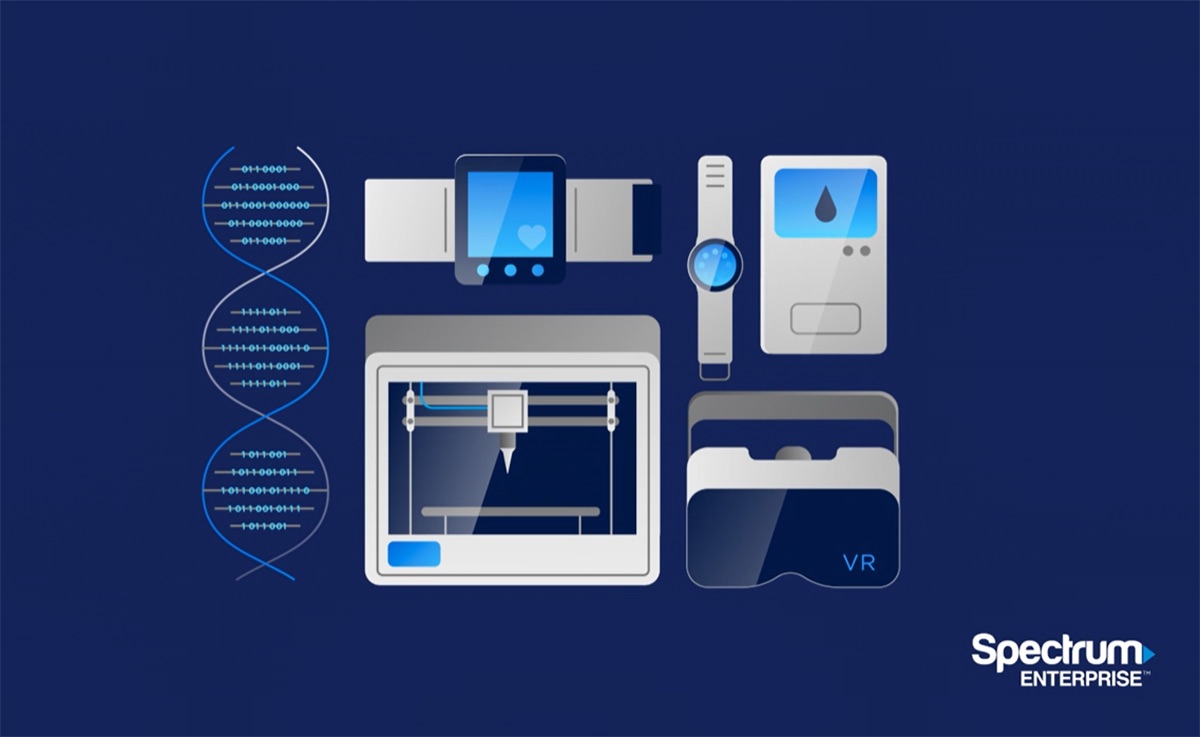
As healthcare investments in artificial intelligence (AI), Internet of Medical Things (IoMT) and remote patient monitoring technologies reach unprecedented levels, a critical gap has emerged. Hospitals and health systems lack the IT infrastructure needed to support these transformative technologies.
Recent HIMSS Market Insights research reveals that current healthcare IT infrastructure is inadequately equipped to support advanced analytics, predictive modeling, IoT devices, wearable technology, AI-powered care delivery and blockchain applications for health data security.1 Other research shows that this infrastructure deficit threatens to undermine massive industry investments projected to reach $149 billion for AI by 2030,2 $814 billion for IoMT by 20323 and $78 billion for remote patient monitoring by 2029.4
Critical infrastructure gaps emerge
The HIMSS study shows that healthcare organizations are struggling with fundamental networking limitations that prevent successful technology deployment. “Multi-faceted connectivity options are crucial for hospitals expanding services and adopting new technologies,” said Andrew Craver, vice president of portfolio marketing for Spectrum Business®. The shift from traditional 10-gigabit connections to 100-gigabit capacity has become essential due to AI applications, analytics demands and comprehensive electronic health record (EHR) management requirements, he added.
The challenge extends beyond raw bandwidth. Healthcare networks must now support hospital-issued devices, personal devices and smart medical equipment distributed across metropolitan areas and remote populations. This expansion requires robust and versatile connectivity to reach patients outside traditional hospital boundaries, fundamentally changing how healthcare organizations think about their network perimeter.
ROI justification becomes critical
Healthcare CIOs are reimagining how they present infrastructure investments to leadership, moving away from viewing IT as a cost center toward demonstrating measurable value. “CIOs must justify IT infrastructure investments by demonstrating ROI and linking them directly to improved patient care and operational efficiency,” Craver explained.
This shift in perspective recognizes that infrastructure investments directly impact patient outcomes. As Craver observed: “Business executives are making business decisions for the health system, but every business decision involves patients’ lives.”
Security becomes the ‘new perimeter’
The proliferation of connected devices and edge computing has fundamentally altered healthcare cybersecurity requirements. “Security is now the ‘new perimeter’ as networks expand, requiring advanced authentication and threat management protocols,” according to Craver. Traditional hub-and-spoke network configurations are giving way to distributed models that push data processing to network edges, expanding the attack surface healthcare organizations must protect.
Modern healthcare security frameworks now emphasize zero trust architecture, multi-factor authentication and continuous access verification. The focus has shifted from device-level security to individual user verification, with systems continuously validating whether specific users need access to network areas at any given moment.
Managed services emerge as a solution
Given limited internal IT resources and specialized skill requirements, healthcare organizations increasingly rely on managed service providers for scaling infrastructure investments. “Managed service providers are key for hospitals to scale and cost-effectively optimize their infrastructure ,” Craver said.
Healthcare leaders who fail to address these infrastructure gaps risk missing opportunities to improve patient outcomes, enhance care quality, boost patient satisfaction and improve provider experiences. The convergence of massive technology investments with inadequate supporting infrastructure represents both a critical challenge and an urgent opportunity for healthcare transformation.
Without immediate action to modernize IT infrastructure, healthcare organizations may find themselves unable to capitalize on the very technologies they’re investing billions of dollars to acquire.
Learn more about digital healthcare transformation at: https://enterprise.spectrum.com/solutions/industries/healthcare/digital-healthcare-transformation-insights.html
References
- HIMSS Market Insights. December 2024 and January 2025. Bandwidth and Digital Infrastructure [research report]. This research was conducted among 50 executives and IT/technology leaders (managers and above in healthcare in the United States. Spectrum Business’ sponsorship was not divulged to survey participants.
- Grand View Research. April 2024. AI In Healthcare Market Size, Share, and Trends Analysis Report By Component (Hardware, Services), By Application, By End Use, By Technology, By Region (North America, Europe, APAC, Latin America, MEA), and Segment Forecasts, 2025 - 2030. https://www.grandviewresearch.com/industry-analysis/artificial-intelligence-ai-healthcare-market.
- Fortune Business Insights. May 26, 2025. Internet of Medical Things (IoMT) Market Size, Share & Industry Analysis, By Product (Stationary Medical Devices, Implanted Medical Devices, and Wearable External Medical Devices), By Application (Telemedicine, Medication Management, Patient Monitoring, and Others), By End-user (Healthcare Providers, Patients, Government Authorities, and Others), and Regional Forecast, 2024-2032. https://www.fortunebusinessinsights.com/industry-reports/internet-of-medical-things-iomt-market-101844.
- Research and Markets. February 2025. Remote Patient Monitoring (RPM) Market by Offering (Software, Integrated Device), Device (Wearable, Implants, Handheld), Function (Cardiac, Glucose, Multiparameter), Application (Diabetes, Cardio, Neuro), End User, & Region - Global Forecast to 2030. https://www.researchandmarkets.com/report/remote-patient-monitor?srsltid=AfmBOooLiBqwROkZHPyIZXPMIlUG8OHAPyT5kL1Ns1MmXbl8TFMXjeYH.








